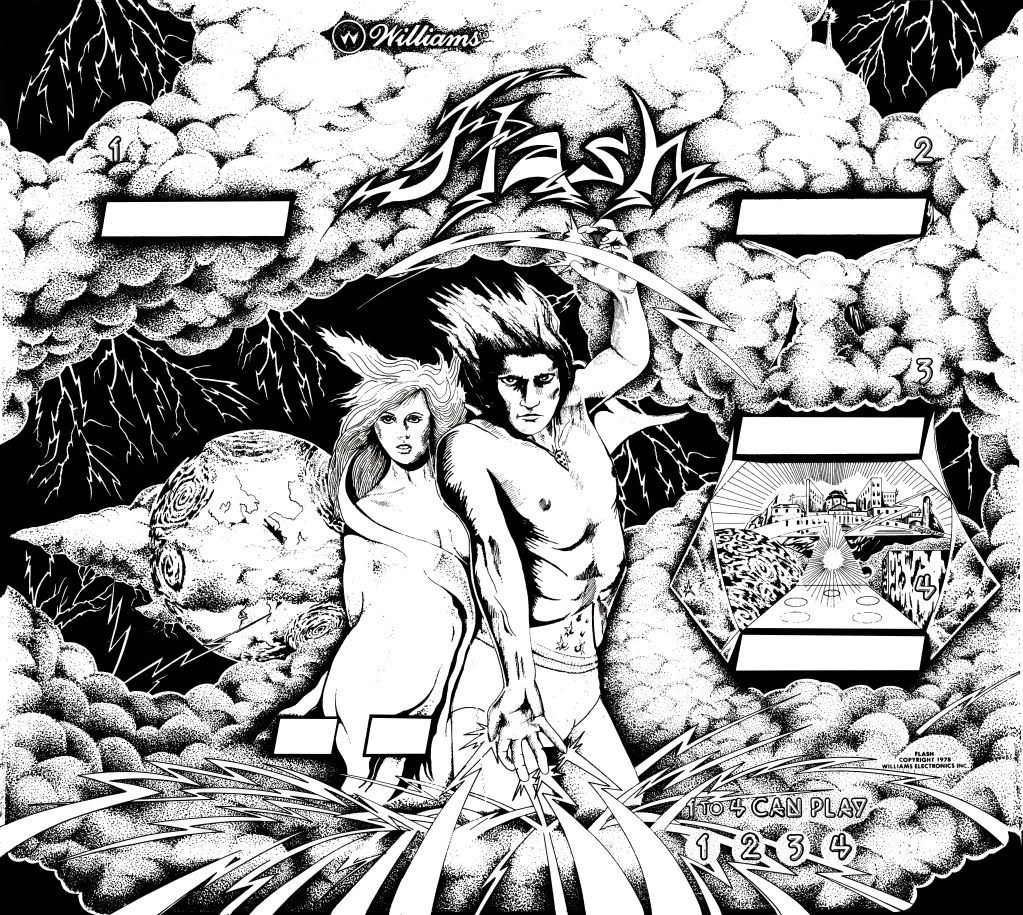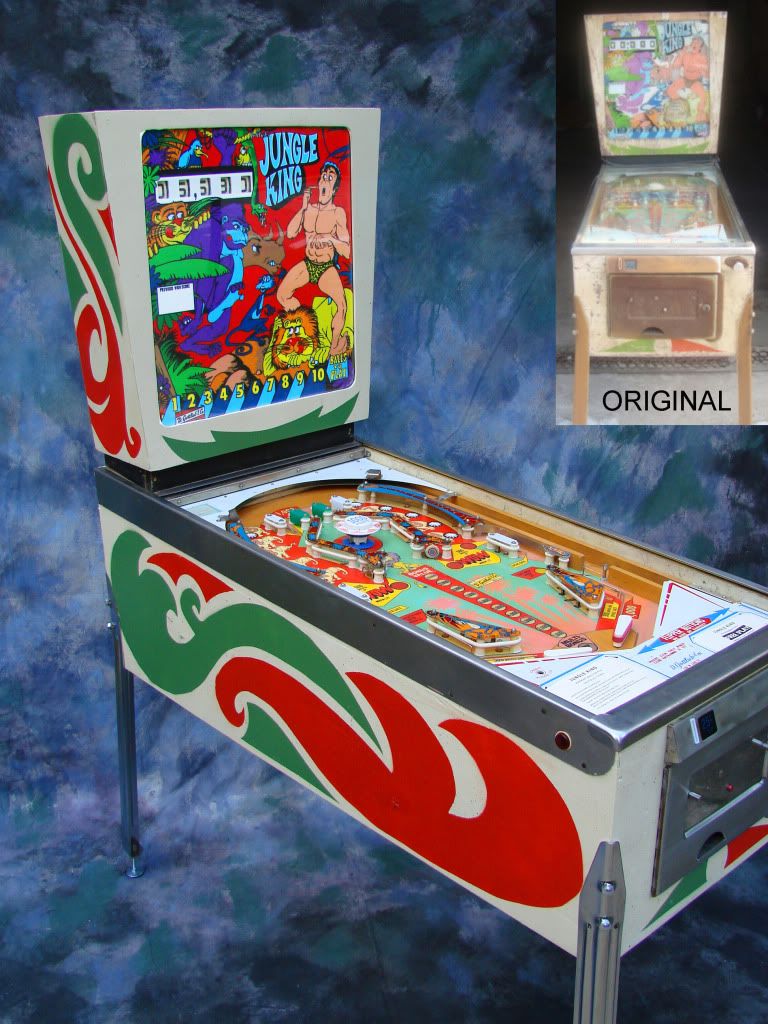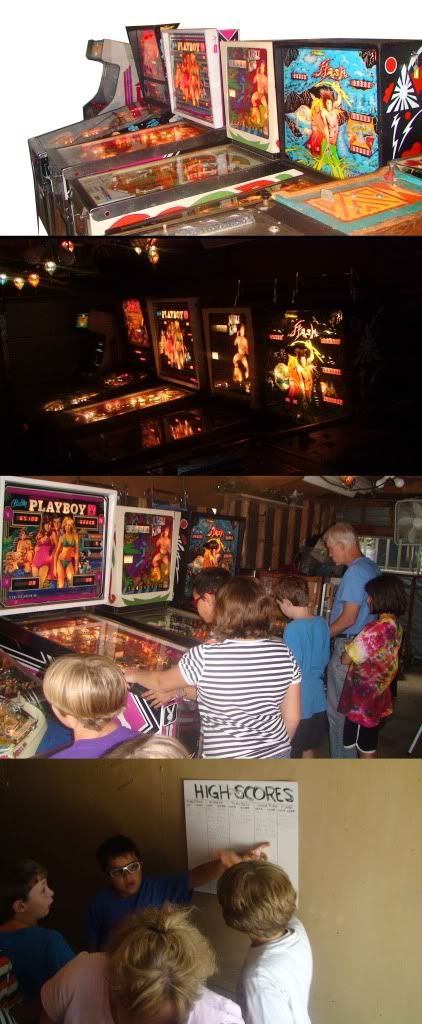 Spy Hunter was designed with a single pop bumper, and the top of the bumper cap had a game-specific design. The design was the face of the spy/driver featured on the playfield and on the backglass of the game, Agent GK (the initials of the original designer). When we picked up this game, the pop bumper cap was broken (very common, as they are fairly fragile), and it wasn't an original cap anyway, just a generic amber color.
Spy Hunter was designed with a single pop bumper, and the top of the bumper cap had a game-specific design. The design was the face of the spy/driver featured on the playfield and on the backglass of the game, Agent GK (the initials of the original designer). When we picked up this game, the pop bumper cap was broken (very common, as they are fairly fragile), and it wasn't an original cap anyway, just a generic amber color.To restore the pop bumper cap, I found an image of the original bumper cap art online, and touched this up in Photoshop. I printed in out in black on clear decal paper, and trimmed the edges. I took a new amber snap cap with no design, and pplied the decal, and a coule of coats of polyurethane. The finished product looks very much like the original snap cap, unique to the Spy Hunter game.
Alex & I have completed rebuilding all four flipper assemblies for the playfied, and this morning I re-installed the pop bumper assembly, including the newly minted snap cap. Everything is coming along; we hope to play our first game this weekend.




